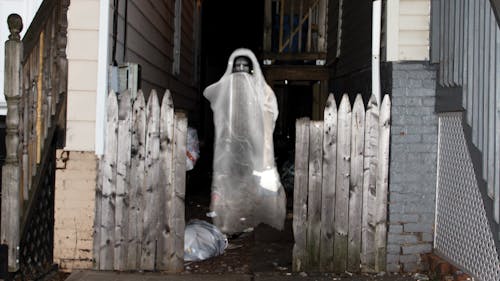Researchers explain the science behind horrors, hauntings

Through almost 2 1/2 centuries of existence, Rutgers has seen many haunted houses and visiting ghosts.
But while the belief in ghosts is real, ghosts themselves do not exist, said Julien Musolino, an associate professor in the Department of Psychology.
The belief in souls could stem from the development of other cognitive abilities, or it could have been “selected for” through evolution. People appear to be naturally inclined to believe in souls either way, Musolino said.
“If you couple the fact that beliefs in souls and ghosts are very intuitive with the fact that most people aren’t professional scientists, … you can begin to understand why beliefs in souls and ghosts are so prevalent,” Musolino said in an email.
There is no scientific evidence to support the belief in souls, he said. The major reasons for this include the lack of evidence supporting the idea that the mind and body are two separate entities.
Near death experiences where people see the “light at the end of the tunnel” or have their “lives flash before their eyes” are completely real experiences but are not due to the soul, he said.
These experiences can be explained through neuroscience without discussing the soul.
Karen Haboush, an associate clinical professor in the Department of Psychology, said children’s beliefs in ghosts stem from their developing cognitive abilities.
When people claim to interact with ghosts, they often describe feeling strange sensations like being overcome with extreme cold or being touched when they are not, Musolino said. This is due to a number of reasons unrelated to the paranormal.
“It could be a range of things,” he said. “Certain environmental conditions, certain drugs, being subjected to strong acceleration (as combat pilots are when they train) or a plethora of conditions that disrupt the normal functioning of the brain.”
“Very young children have a very hard time distinguishing fantasy from reality,” Haboush said. “They tend to believe more in things that we might think are fantastic at that age.”
Over time, children’s cognitive abilities develop to differentiate between reality and fantasy, but when they are young, they tend to believe more in the latter, she said. Developmental factors could be important contributors to their belief in ghosts.
This inability to distinguish reality from fantasy is what makes comforting young children difficult when they are frightened by horror movies, she said. They do not understand the movies are not real.
Belief in the supernatural is constantly reinforced in our culture through movies, TV shows and many spiritual leaders, Musolino said.
The perpetuation of the belief in ghosts through multiple generations could be attributed to many things, mostly revolving around cultural beliefs, Haboush said.
“Ghosts, or just a belief in spirits and so forth, are a cultural norm for certain groups,” she said. “[The] overall tradition of spirits and so forth may be found from different cultures.”
Another concept is that ghosts and spirits are passed through generations because they are described to be just like people, Musolino said. They have memories, consciousness and more traits that people have — they only lack a physical body.
“This may explain why their cultural transmission has been so successful,” he said.
Andrea DiSanto, a sophomore in the School of Arts and Sciences, said ghosts are only a figment of people’s imaginations.
“I don’t think Rutgers is haunted — at least, I hope it isn’t,” she said. “But if it were, I think it would be somewhere around Old Queens because it is rich in history.”



